Introduction to Shipping Point in SAP
Shipping point in SAP is a key component used to manage the dispatch of products to the customers. It’s defined as a specific location within a company, like a warehouse or distribution centre, from where goods are shipped.
When an order is processed, SAP uses the Shipping point to determine where the product is located and the most efficient way to send it to the customer. This ensures that the delivery process is organized and timely.
The shipping point in SAP is linked to specific plants and is crucial for coordinating logistics, managing inventory, and ensuring customer satisfaction by delivering orders accurately and promptly.
What is a Shipping Point in SAP?
In the SAP SD module, a shipping point is a central element. It represents the physical location from which goods are shipped to customers. Such a location can be a warehouse, factory, or distribution center. In SAP, the shipping point plays a crucial role in processing outbound deliveries.

Shipping Point Characteristics
- Physical Location: It is a specific place on a company’s premises.
- Responsibility: It manages tasks related to product shipping.
- Flexibility: A company may have multiple shipping points based on geographical locations, product types, or shipping methods.
Defining Shipping Point in Enterprise Structure
Defining Shipping point in enterprise structure can be done using Transaction code (OVXD) and using the SPRO IMG activity path :
- Go to → SAP Customizing Implementation Guide → Enterprise Structure → Definition → Logistics Execution → Define copy, delete, check shipping point → Define Shipping Point
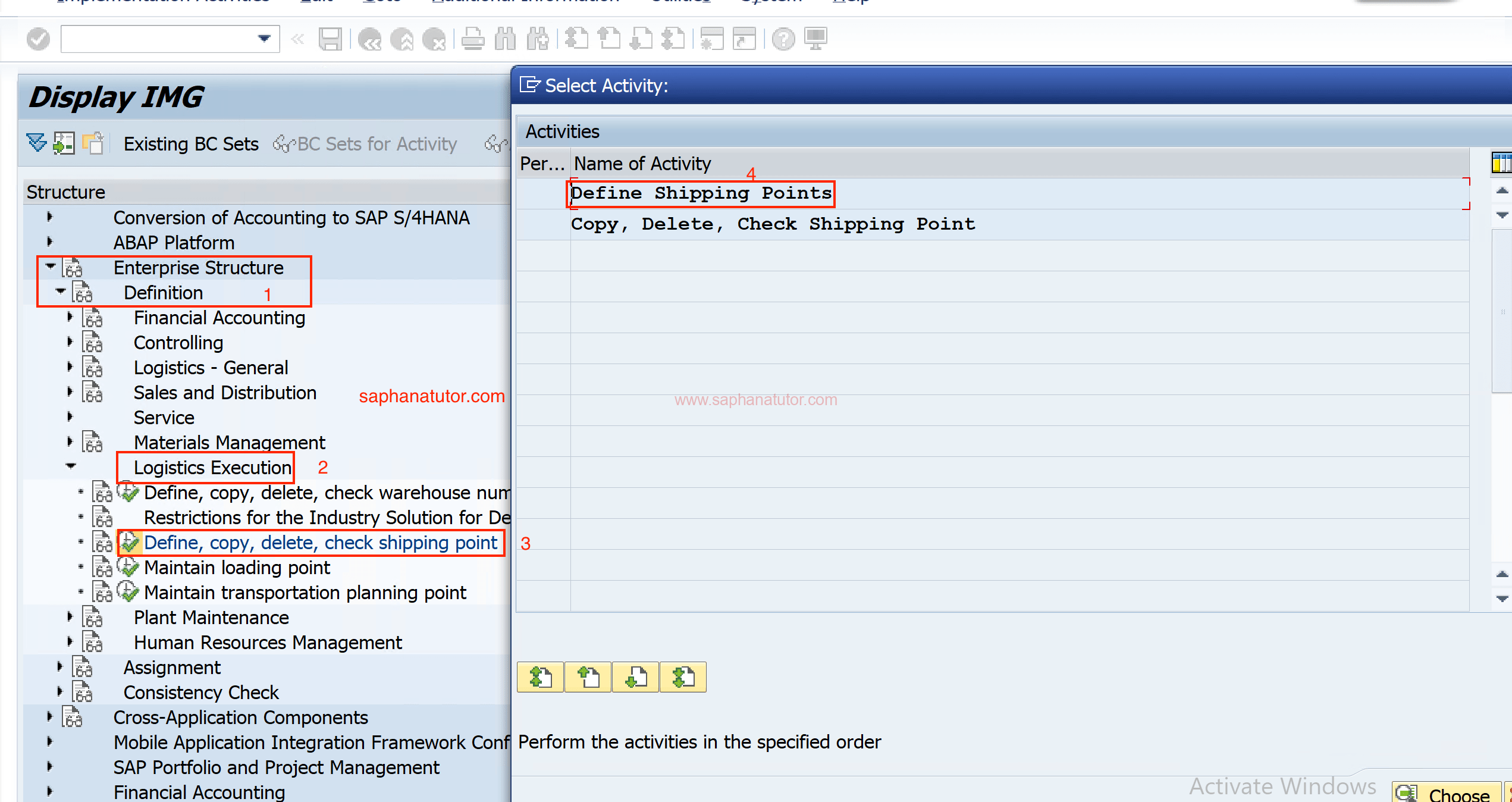
New shipping point can be created from the scratch by creating new entries (or) can be created by copying the standard shipping point and modifying our requirement. Here we copy the standard and create a shipping point called ZSAH.

Now enter the following details:
- Shipping Point: Input a unique four-digit code (ZSAH) for the shipping point.
- Description: Provide a name or a brief description for the shipping point.
- Times: Set the factory calendar and the working hours.
- Determine Times: Define the load time, the time for picking and packing, and how to round off the working days.
- From Text Names: Enter the text for various sections like the header, footer, and greetings.
- Print Picking List: Choose the type of output, the language for messages, and the number of messages to be printed.
In Address details, we have to give details like name, search term, Country /Region, Time Zone, Region and Transportation Zone as shown below and save the settings.
- Transportation zone is one the parameter used for Route Determination in SAP.
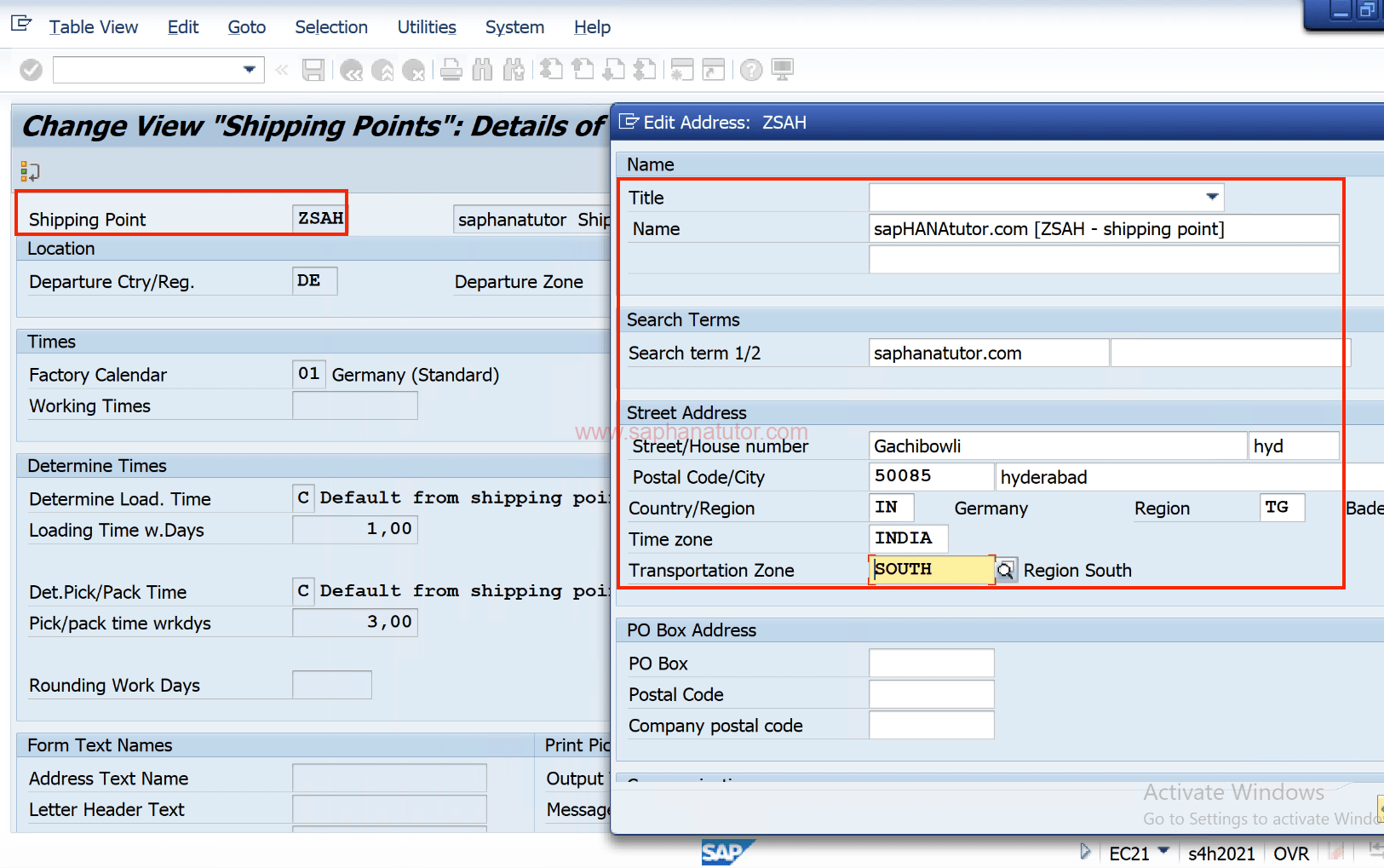
Shipping point (ZSAH) has been created and save the shipping point in SAP.
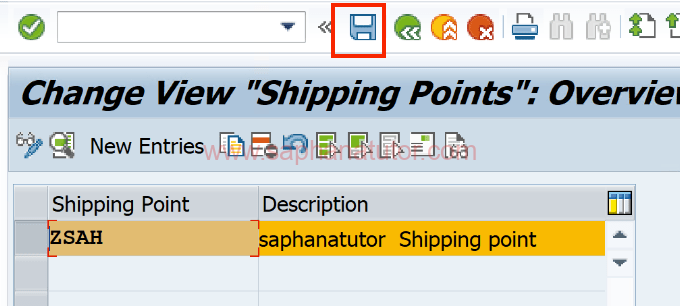
Assigning Shipping point to Plant in SAP
Assigning a shipping point to a plant in SAP is a crucial step in configuring your enterprise structure in SAP for efficient logistics and distribution management. Here’s a simplified explanation of the process:
- Access the SAP Menu: Log into your SAP system and navigate to the SAP menu.
- Enter Customizing Mode: Use the transaction code
SPROto enter the SAP Customizing Implementation Guide (IMG). - Navigate to the Assignment Section: In the IMG, follow the path:
Enterprise Structure→Assignment→Logistics Execution. - Select Shipping Point Assignment: Choose the option for
Assign shipping point to plant.
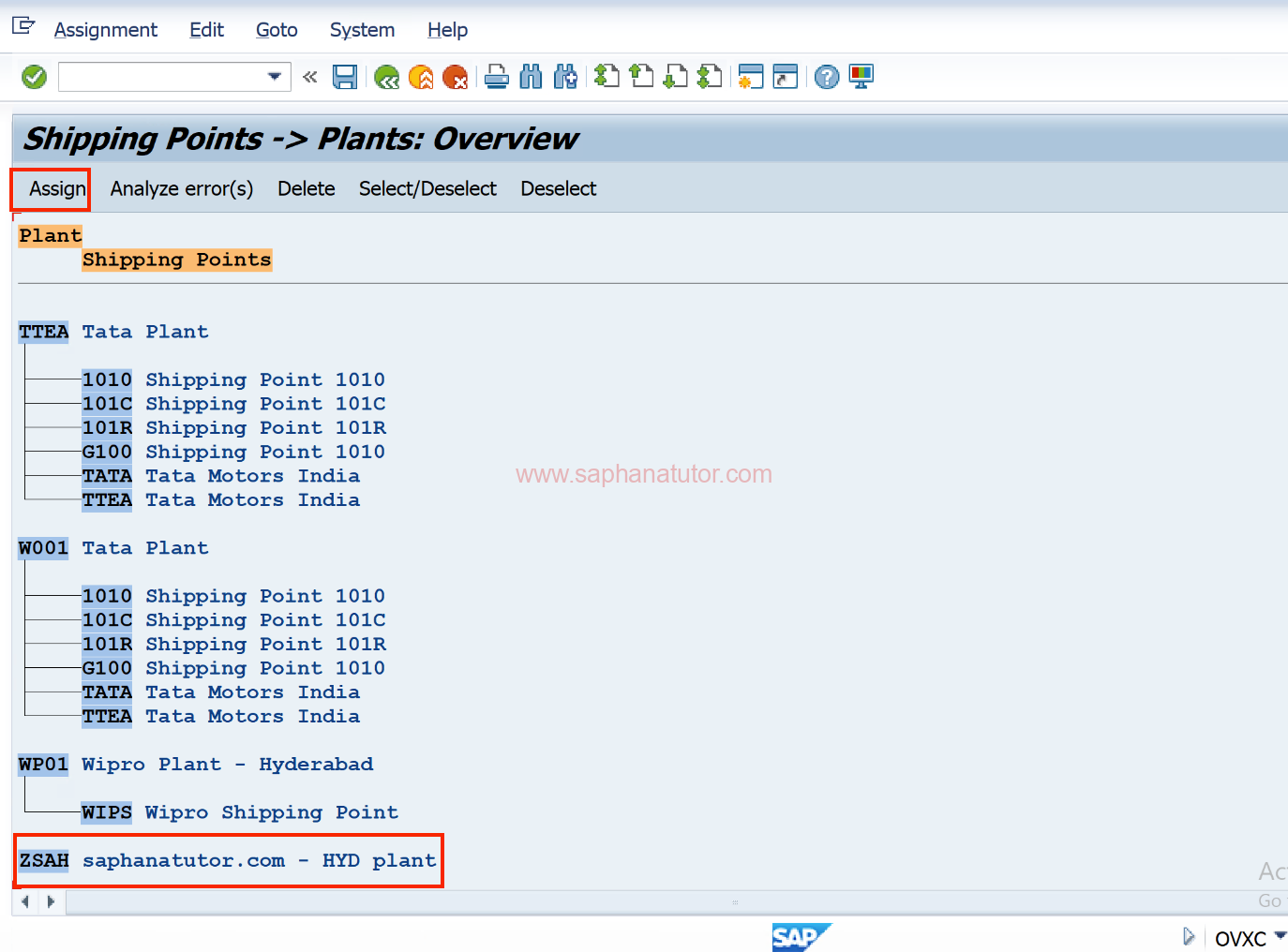
Make the Assignment: In this section, you’ll see a list of plants. Here, you can assign a shipping point to each plant. This is where you decide which shipping point will handle the dispatch of goods for each specific plant.
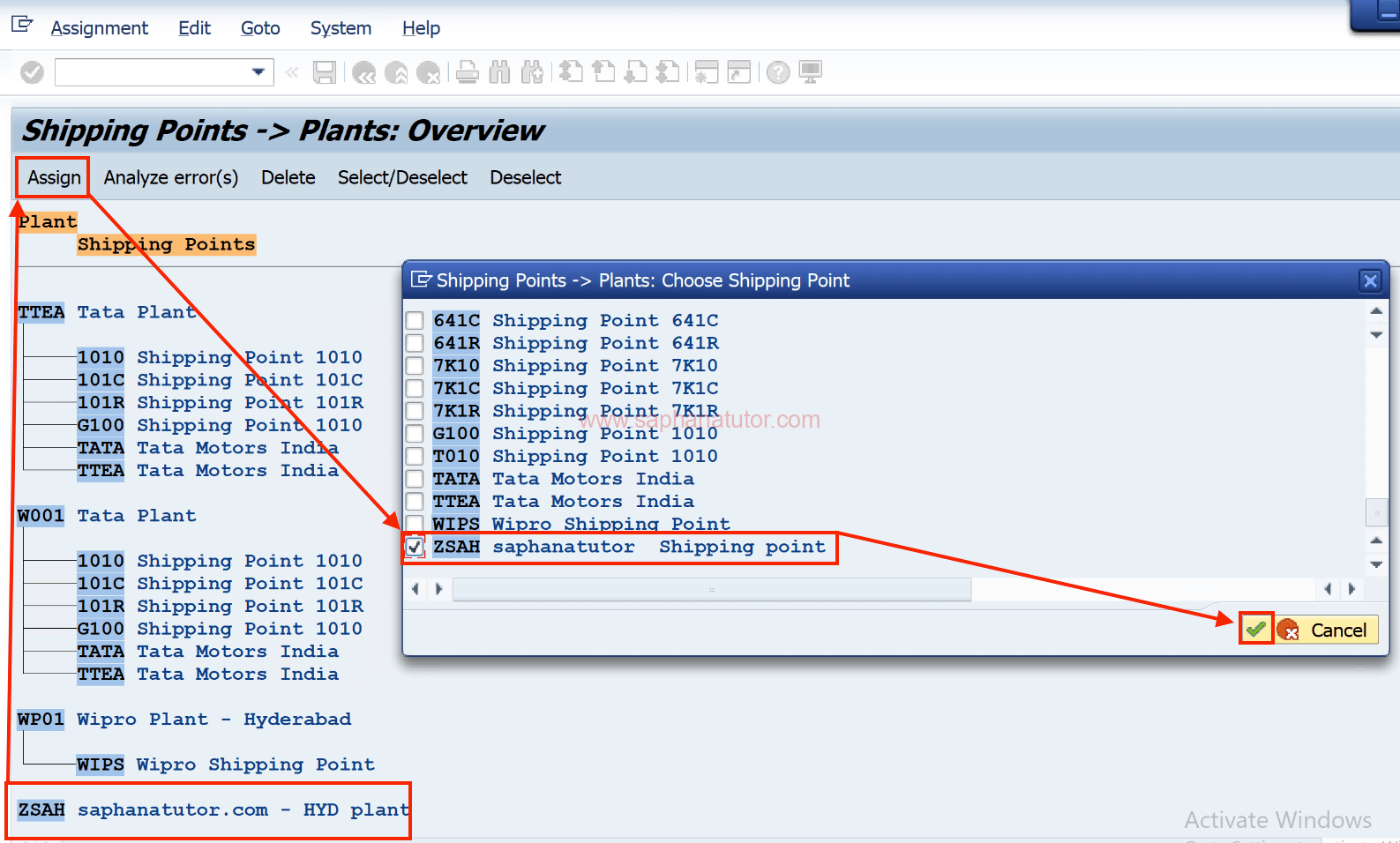
Save Your Changes: After assigning the shipping points to the appropriate plants, make sure to save your changes to ensure the configuration is updated in the system
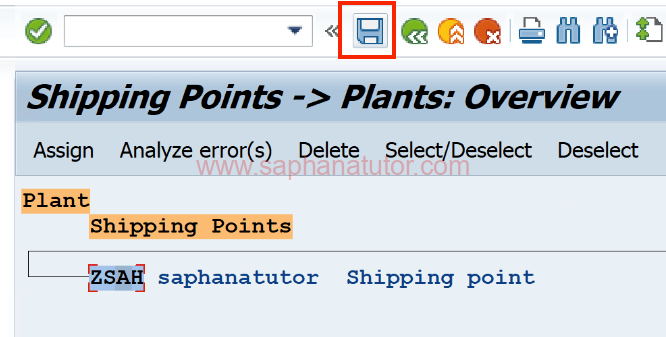
Save the configuration.
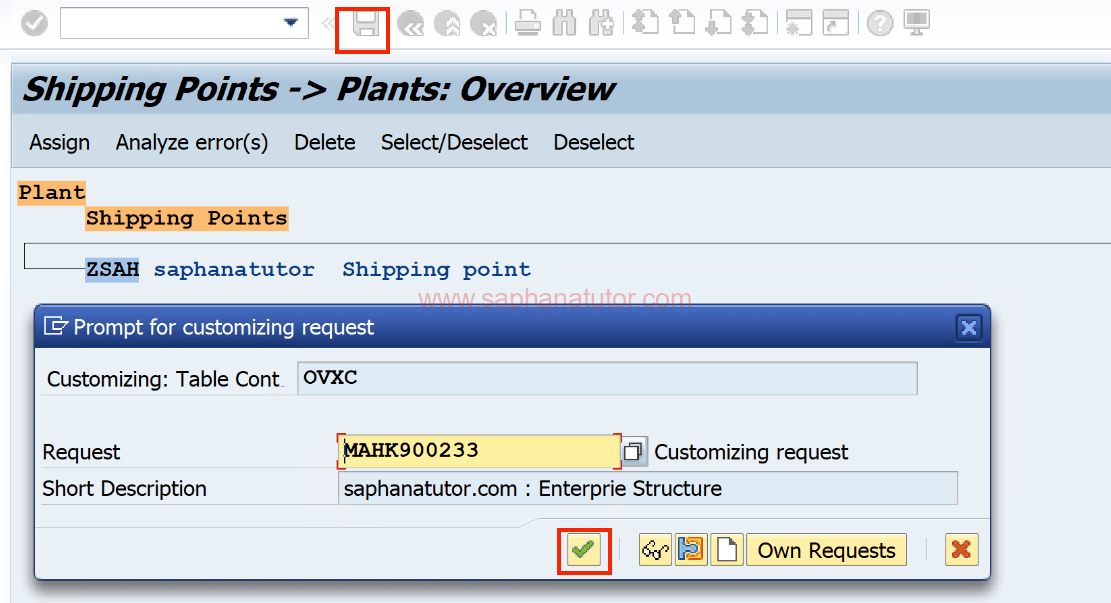
Conclusion
Understanding and correctly configuring the shipping point in SAP is vital for efficient logistics and distribution operations. It ensures that the right products are shipped from the optimal location, enhancing customer satisfaction and operational efficiency. Remember, it is crucial to align your shipping point strategy with your overall business objectives and logistical capabilities. This alignment is key to achieving streamlined operations and meeting customer demands effectively.
